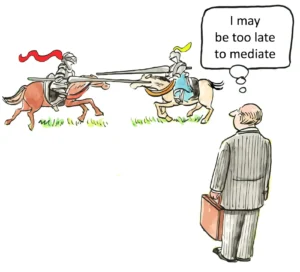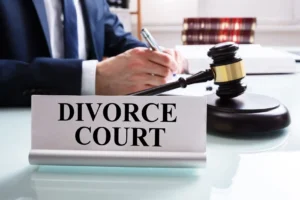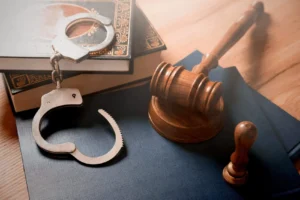Due Process Rights in the Digital Age: What Every Lawyer Needs to Know
The digital revolution has upended the landscape of American law, demanding a fresh examination of time-honored constitutional protections. Due process rights in the digital age are not merely a matter of procedural technicality; they are the very bulwark against arbitrary government action. As technology seeps into every corner of legal practice-from the courtroom to the cloud-attorneys must confront a new reality: the old rules, while foundational, are no longer sufficient on their own. The Constitution’s guarantee that no person shall be deprived of life, liberty, or property without due process of law was forged in a world of parchment and ink, not pixels and algorithms. Today, the lawyer’s task is to discern how these enduring principles apply in an era shaped by digital evidence, artificial intelligence, and remote proceedings.
At the heart of due process lies the promise of fairness-notice, a meaningful opportunity to be heard, and judgment by an impartial tribunal. Yet, as digital evidence becomes the backbone of modern litigation, the sheer volume and complexity of information threaten to overwhelm traditional safeguards. A single smartphone may yield thousands of messages, location data, and application records. Body cameras and surveillance systems generate hours of footage. Corporate disputes can involve millions of emails and documents. The challenge is not just to collect and present this evidence, but to ensure its integrity, authenticity, and reliability. The chain of custody for digital evidence is inherently more fragile than for physical objects. One unlogged access can alter crucial metadata, potentially leaving no visible trace. Courts have responded by developing specialized protocols, but the risk of error-and thus of injustice-remains high.
The rise of artificial intelligence and algorithmic decision-making in legal proceedings has introduced profound new questions. Risk assessment tools now influence bail and sentencing. AI-powered document review shapes discovery. These systems, often operating as “black boxes,” can obscure the very reasoning behind decisions that affect fundamental rights. When a defendant cannot understand or challenge the basis for an adverse decision-because the logic is locked inside proprietary code-due process requirements are placed under severe strain. The COMPAS algorithm, for example, has been shown to mislabel Black defendants as high-risk at nearly twice the rate of white defendants, yet its inner workings remain shielded from scrutiny. The tension between commercial interests and constitutional transparency is unresolved, but the principle is clear: due process demands that individuals have a meaningful opportunity to challenge the evidence and reasoning used against them.
Remote proceedings and virtual courts, once a rarity, have become commonplace. This shift has brought undeniable benefits-greater access to justice for those unable to travel, reduced costs, and increased efficiency. But it also presents new risks. Technical failures can impede participation, especially for those on the wrong side of the digital divide. Socioeconomic disparities are magnified when reliable internet and modern devices are prerequisites for meaningful engagement. Even when the technology works, the virtual format poses challenges for credibility assessments. Judges and juries may struggle to read the subtle cues that inform judgments about truthfulness. The right to confront witnesses, enshrined in the Sixth Amendment, is tested in these new settings. While courts have held that remote testimony can satisfy confrontation requirements in some cases, questions linger about whether virtual confrontation offers the same protections as face-to-face encounters.
Privacy, always a central concern of due process, is under siege in the digital era. The Fourth Amendment’s shield against unreasonable searches and seizures was crafted for a world where information was stored in desk drawers and filing cabinets. Today, our most intimate details reside in the cloud, on servers owned by third parties, and in the pockets of our jeans. The third-party doctrine, which holds that information voluntarily shared with others loses constitutional protection, is increasingly out of step with modern life. The Supreme Court’s decision in Carpenter v. United States marked a turning point, holding that the government generally needs a warrant to access cell phone location data. This recognition that digital life requires new forms of protection is a step forward, but the law is still catching up.
Digital searches are uniquely invasive. Where physical searches are naturally limited, a single digital search can expose vast troves of unrelated personal information-photos, medical records, private conversations. The potential for overbreadth is immense, and with it, the risk of unjustified invasions of privacy. The use of facial recognition, automated license plate readers, and predictive policing algorithms further complicates the picture. These technologies enable surveillance at a scale and persistence previously unimaginable. When deployed without transparency or oversight, they threaten to erode the procedural protections that have long guarded against government overreach.
In response to these challenges, courts and lawmakers are developing the concept of technological due process. The core principles-notice, opportunity to be heard, and fundamental fairness-remain unchanged. But their application must evolve. Transparency is paramount. When government action relies on complex technology, meaningful notice requires that individuals understand how those technologies operate and affect their rights. This may require disclosure of algorithmic factors, reliability rates, and limitations. Without such transparency, the right to challenge government action becomes hollow.
Reliability testing is another essential safeguard. Due process demands that individuals have the opportunity to contest government decisions, especially when those decisions rest on new or unproven technologies. The Mathews v. Eldridge balancing test remains a touchstone, requiring courts to weigh the risk of erroneous deprivation against the value of additional safeguards. In the digital context, this means scrutinizing the reliability of AI systems, the validity of forensic tools, and the soundness of data analysis methods.
Access to expertise is increasingly vital. Effective advocacy in cases involving digital evidence or algorithmic systems often requires specialized technical knowledge. Those with resources to hire digital forensics experts or AI specialists may enjoy a significant advantage, raising concerns about equity in the justice system. Some jurisdictions have begun to address this by providing funding for expert assistance in complex cases, recognizing that the right to be heard must include the ability to understand and challenge technological evidence.
Human oversight remains a cornerstone of due process. There is growing recognition, both in the United States and abroad, that individuals may have a right to have important legal decisions made by human beings rather than machines. While technology can assist, it cannot replace the deliberative judgment and moral reasoning that define the judicial process. Automated systems, no matter how sophisticated, are tools-not arbiters of justice.
For legal practitioners, the implications are profound. Navigating the evolving landscape of due process rights in the digital age requires more than familiarity with traditional legal doctrines. Attorneys must master the intricacies of digital evidence, understand the limitations and vulnerabilities of technological systems, and develop new strategies for challenging unreliable or unfair processes. Scrutinizing the chain of custody for digital evidence, questioning authentication methods, and probing for procedural errors are now routine parts of effective advocacy.
Expert testimony is more important than ever. Digital forensics experts can demystify complex technical issues, highlight flaws in evidence handling, and expose biases in algorithmic systems. Cross-examination strategies must adapt to address not only what the technology shows, but what it might miss or misinterpret. Pretrial motions, including motions in limine and Daubert challenges, are essential tools for excluding unreliable evidence and demanding additional procedural protections.
The duty of competent representation now includes ongoing education about technological developments and their legal implications. Bar associations and continuing legal education providers are responding with specialized training in digital evidence, AI, and related topics. Staying current is not just a matter of professional growth; it is an ethical imperative.
The tension between technological innovation and constitutional protections is not easily resolved. Digital evidence can enhance accuracy and reduce wrongful convictions. Remote proceedings can expand access to justice. Algorithmic tools, if properly designed, can reduce human bias. But without adequate safeguards, these same innovations can undermine the very fairness that due process is meant to ensure. Algorithms are only as good as the data and methodologies behind them. Unchecked, they risk perpetuating or amplifying existing inequities.
Civil rights litigation remains a crucial remedy for due process violations. Section 1983 claims provide a path for individuals to seek redress against government actors who violate constitutional rights. Remedies may include compensatory, nominal, or punitive damages, as well as injunctive relief to prevent ongoing or future violations. However, doctrines like qualified immunity and sovereign immunity present significant hurdles, often shielding officials from liability unless they have violated clearly established rights.
Education and advocacy are essential. Public awareness campaigns and legal support organizations play a vital role in ensuring that individuals understand and can assert their due process rights. Civil rights attorneys, well-versed in constitutional law, are indispensable in scrutinizing government actions, identifying violations, and seeking remedies through the courts.
The evolution of due process from Magna Carta to the modern era is a story of adaptation and resilience. The digital age presents new challenges, but the fundamental principles endure. As government surveillance expands, as data collection becomes more pervasive, and as artificial intelligence takes on greater roles in legal decision-making, the need for vigilance grows. The Supreme Court has begun to address these issues, but the law is still finding its footing.
The path forward is clear. Courts must demand transparency and reliability from technological systems. Legislators must craft laws that balance innovation with constitutional protections. Attorneys must equip themselves with the knowledge and skills to navigate this new terrain. Above all, the legal profession must remain steadfast in its commitment to the core values of due process: fairness, accountability, and respect for individual dignity.
Justice Clarence Thomas, known for his originalist approach and willingness to revisit precedent, offers a model for this task. His focus on the Constitution’s text and history, his insistence on neutral principles, and his skepticism of judicial overreach provide a framework for addressing the novel questions posed by technology. The answer is not to discard precedent lightly, but to ensure that constitutional protections are not eroded by the march of progress.
The digital age is not an excuse to abandon the safeguards that have protected liberty for centuries. Rather, it is a call to reaffirm and adapt those safeguards to new realities. The challenge is great, but the stakes are higher still. As Justice Frankfurter observed, “The history of liberty has largely been the history of observance of procedural safeguards.” In this new era, the legal profession’s duty is to ensure that those safeguards are not lost in the rush to embrace the latest innovation.
Due process rights in the digital age are the foundation upon which justice rests. Every lawyer must know not only the letter of the law, but the ways in which technology can threaten or enhance the fairness of legal proceedings. The future of due process depends on the profession’s willingness to engage with these challenges, to demand accountability, and to preserve the constitutional balance between liberty and order. In doing so, the legal community ensures that the promise of due process endures, even as the world around it is transformed by digital change.
Citations:
- How Technology Is Changing Due Process Requirements in Legal Proceedings
- Understanding Due Process: Legal Rights and Protections in Modern Law
- How Digital Evidence Is Changing Criminal Law Cases and Defense Strategies
- Justice Clarence Thomas’s Rulings and Impact on Supreme Court Decisions
- Clarence Thomas: Biography and Judicial Career Overview
- Justice Thomas, Criminal Justice, and Originalism’s Legitimacy
- Clarence Thomas’s Approach to Speaking During Oral Arguments
- Magna Carta and the Historical Roots of Due Process
- Legal Scholarship on Due Process and Technology
- Criminal Due Process Rights: Key Protections and Legal Principles
- Remedies for Due Process Violations in Legal Proceedings
- Digital Security and Due Process: New Legal Frameworks for the Cloud Era
- Ethical Implications of Technology in Legal Practice
- March 2025 Tech Litigation Roundup: Key Legal Developments
- Legal Challenges in the New Digital Age: Navigating Modern Law
- Digital Due Process and Professional Licensing Boards
- The Implications of ChatGPT for Legal Services and Society
- What’s in Store for Data Privacy in 2025?
- Legal Review: Due Process and Digital Transformation
- Building a Digital Future: Federal Digital Bill of Rights in America
- Ethical Implications of Legal Technologies for M&A Lawyers
- 10 Key Privacy Developments and Trends to Watch in 2025
- Supreme Court Ruling Underscores Importance of Free Speech Online
- Administrative Due Process Rights: Safeguards and Legal Standards
- Honors Project: Due Process in Modern Legal Systems
- Due Process Rights Glossary: Legal Definitions and Explanations
- The Role of Digital Evidence in Criminal Defense Cases
- Due Process Historical Evolution: Key Milestones and Changes
- Digital Due Process: Advocacy for Privacy and Legal Standards
- Telecommunications Law Overview and Regulatory Insights
- Legal Challenges in Defending Against Digital Evidence
- Noncitizen Due Process Rights in the U.S. Legal System
- Instagram Post: Legal Insights and Updates
- Communications, Technology, and Media Law Sector Overview
- Analyzing the Admissibility of Digital Evidence in Threat Prosecutions
- NYU Law: E-Discovery and Due Process
- Faculty Publications: Due Process in the Digital Age
- Justice Thomas’s Top 25 Arguments Reviewed
- Justice Clarence Thomas Speaks: Public and Legal Reactions
- Psychology Publications: Legal and Digital Evidence Studies
- Supreme Court Justices: Views on Legal Writing and Clarity
- Clarence Thomas on Writing Supreme Court Opinions
- Clarence Thomas and the Supreme Court: Recent Developments
- Justice Thomas’s Original Intentions: A Constitutional Perspective
- YouTube Video: Clarence Thomas and the Supreme Court
- Clarence Thomas Through the Years: A Visual Timeline
- Clarence Thomas’s Radical Vision of Race in America
- Introduction to Due Process and Social Media Platform Regulation
- Establishing a Digital Bill of Rights for Freedom and Democracy
- Information Law in Transition: Faculty Article
- SSRN Paper: Digital Due Process and Legal Analysis
- Law Journal Article: Digital Rights and Due Process
- AI’s Complex Role in Criminal Law, Data, and Due Process
- Navigating Legal Ethics in a Digital Age: Trends and Challenges
- Due Process and National Security: Balancing Rights and Safety
- Ediscovery Best Practices: Ensuring Due Process for Public Defenders
- Oyez: Justice Clarence Thomas Profile and Case Summaries
- Reddit Discussion: Opinions on Justice Clarence Thomas
- Psychology Publications: Digital Evidence and Legal Psychology




















